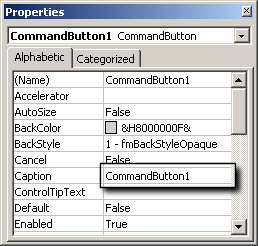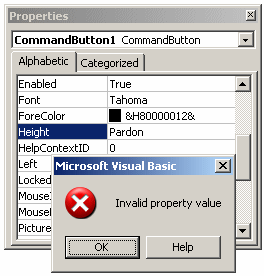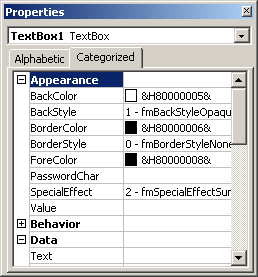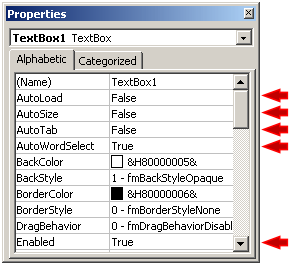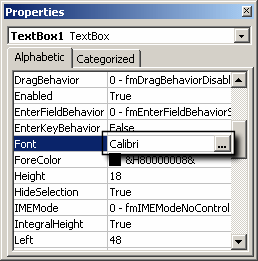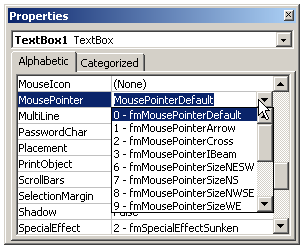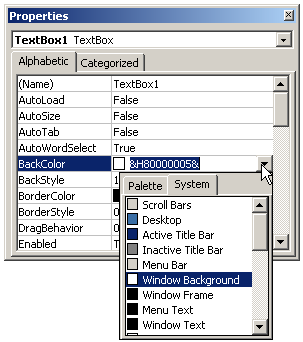 |
The Properties Window |
|
The Appearance of the Properties Window |
|
Introduction |
|
To manipulate an object, you can use the Properties window:
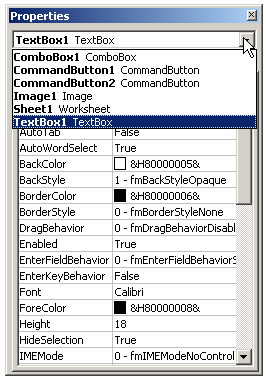 |
|
|
- Start Microsoft Excel
- On the Ribbon, click Developer
- In the Controls section, click Insert
- Under ActiveX Controls, click any object and click the main area of the spreadsheet
- Right-click the object you added and click Properties
|
The Name of a Property |
After adding a control to your application, you can manipulate its
characteristics. If you are working in Microsoft Excel, to put a control
into edit mode, in the Controls section of the Ribbon, click the Design
Mode button ![]() .
.
Each field in the Properties window has two sections: the property’s
name and the property's value:
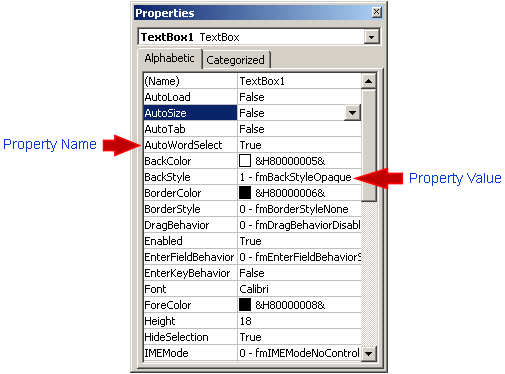
The name of a property is represented in the left column. This is the official name of the property. Notice that the names of properties are in one word. Based on this, our House class would have been defined as follows:
House
[
Address
TypeOfHouse
NumberOfBedrooms
NumberOfBathrooms
HasIndoorGarage
LivingRoomCoveredWithCarpet
KitchenHasIslandStove
]
You can use this same name to access the property in code.
|
Accessing a Control's Property |
To access a property of a control using code, type the name of the control, followed by a period, followed by the name of the property. Based on this, if you have a House object named Langston, to access its TypeOfHouse property, you would write:
Langston.TypeOfHouse
|
The Value of a Property |
The box on the right side of each property name represents the value of the property that you can set for an object. There are various kinds of fields you will use to set the properties. To know what particular kind a field is, you can click its name. To set or change a property, you use the box on the right side of the property’s name: the property's value, also referred to as the field's value.
|
The Default Value of a Control's Property |
To programmatically change the value of a property, type the name of the control, followed by a period, followed by the name of the property, followed by =. Then, on the right side of equal, you must provide the value but this depends on the type of value.
The people who developed the controls also assigned some primary values to their properties. This is the type of value that a property either is most likely to have or can use unless you decide to change it. The primary value given to a property is referred to as its default value. Most of the time, you can use that property. In some other assignments, the default value will not be suitable.

